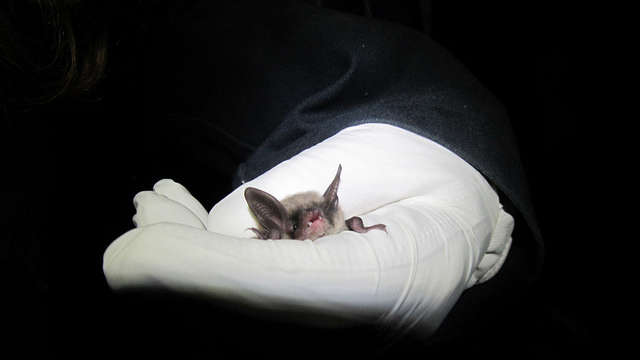Abstracts: Zika’s Structure, Leaking Gas Pipes, and More
A roundup of science news from around the Web — and around the world.
• The manufacturer of a pain-relief cream full of opioids bribed doctors and pharmacists $25 million to prescribe it. The cream then led to the death of an injured worker’s child. (Reveal News)
• HIV patients have a high risk of organ failure. For the first time, a team of Johns Hopkins surgeons managed to transplant a kidney and liver from one HIV patient to two others. (NPR)

A northern long-eared bat. North American bats are threatened by the fast-spreading white nose syndrome. Visual by USFWS Midwest
• The immune response that’s linked to schizophrenia may also play a role in Alzheimer’s. The race is on to translate this knowledge into a new drug. (STAT)
• The stomachs of beached sperm whales in Germany held a car engine cover and a plastic bucket: “a horrible indictment” of the way humans treat the seas. (National Geographic)
• Twenty-five independent psychology teams replicated the same 10 experiments before they were published, in an effort to solve psychology’s replication problem. (The Atlantic)
• A random sample of leaking natural gas pipes in Boston found that 15 of them presented an immediate explosion hazard, and others were seeping methane. (InsideClimate News)
• Scientists at Purdue University have discovered the structure of the Zika virus, providing a clearer target for potential vaccines or antiviral medicines. (Science News)
• The bat-killing fungus called white nose syndrome reached the West Coast, moving faster than biologists expected. (Los Angeles Times)
• Looking at 30 years of data, a team of astronomers suggest our theory of gamma ray bursts — which may have caused mass extinctions — needs updating. (New Scientist)
• And finally: Geologists are planning to drill to the bottom of the Chicxulub crater to figure out how the 8.6-mile wide asteroid that killed the dinosaurs could have pushed the Earth’s crust over 12 miles down. (Nature News)










